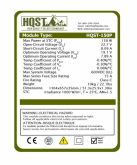kenkoh
Solar Enthusiast
This is what I just got from a YouTuber who built using the same Victron, he uses both a breaker & a fuse this is his explanation:Either one or the other, no need/sense for both a breaker and a fuse in the same line. If all the breaker is being used for is a switch, use a real switch.
"Solar panels are rated under STC (standard test conditions). But every once in a while you might encounter more sunlight than STC. This happens to me this time of year with the snow on the ground, cold air temp, and a clear day. So we generally add 25% to be safe. For example, your 600 watts of panels charging 12v = 50 amps. But multiply that by 1.25 = 62.5 amps. So using a 60 amp circuit breaker has the potential to trip once in a while. Very low risk because there is some overhead built into circuit breakers, but the potential is there. I would prefer sizing things a little over. So I might use a 70 amp breaker with 4 gauge wire, and an 80 or 90 amp Class-T fuse. This also helps if you include your continuous duty requirement. Which simply says you need to over-size wires if you use them continuous duty, which this is."







